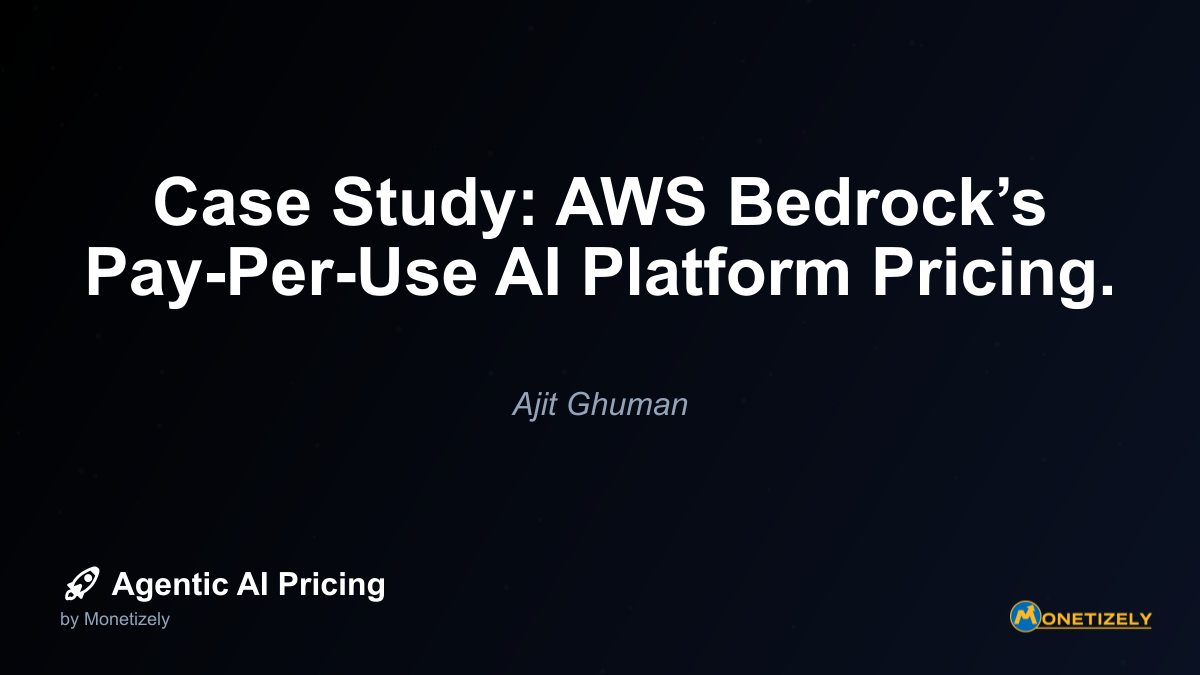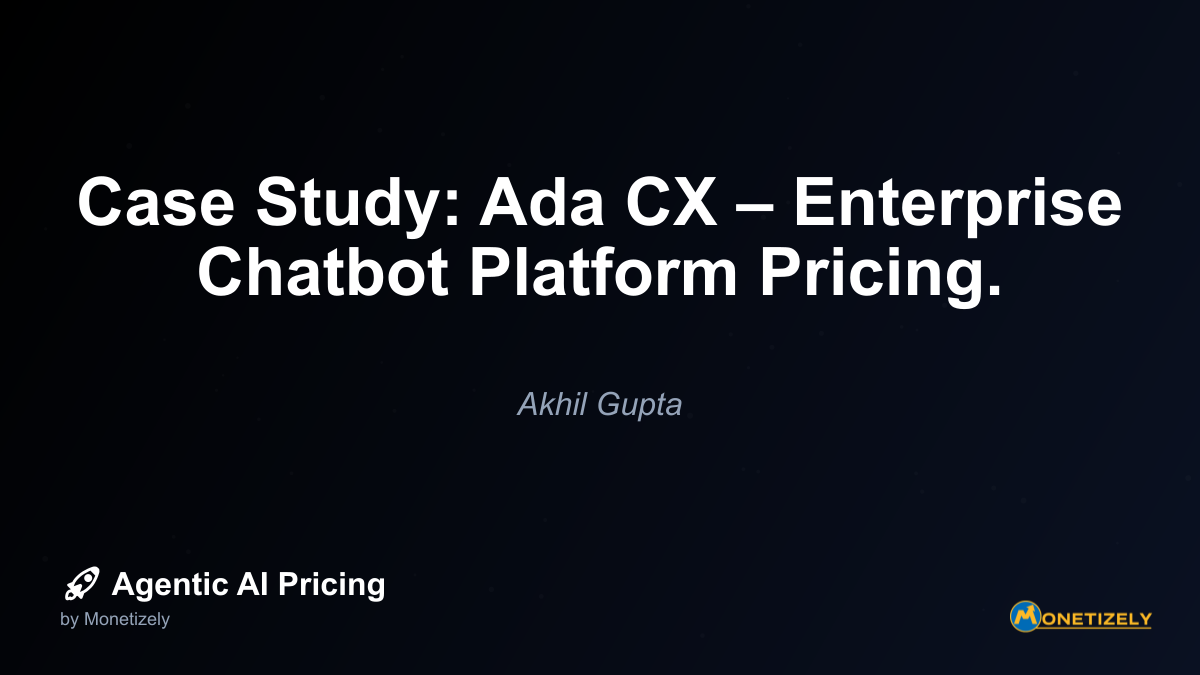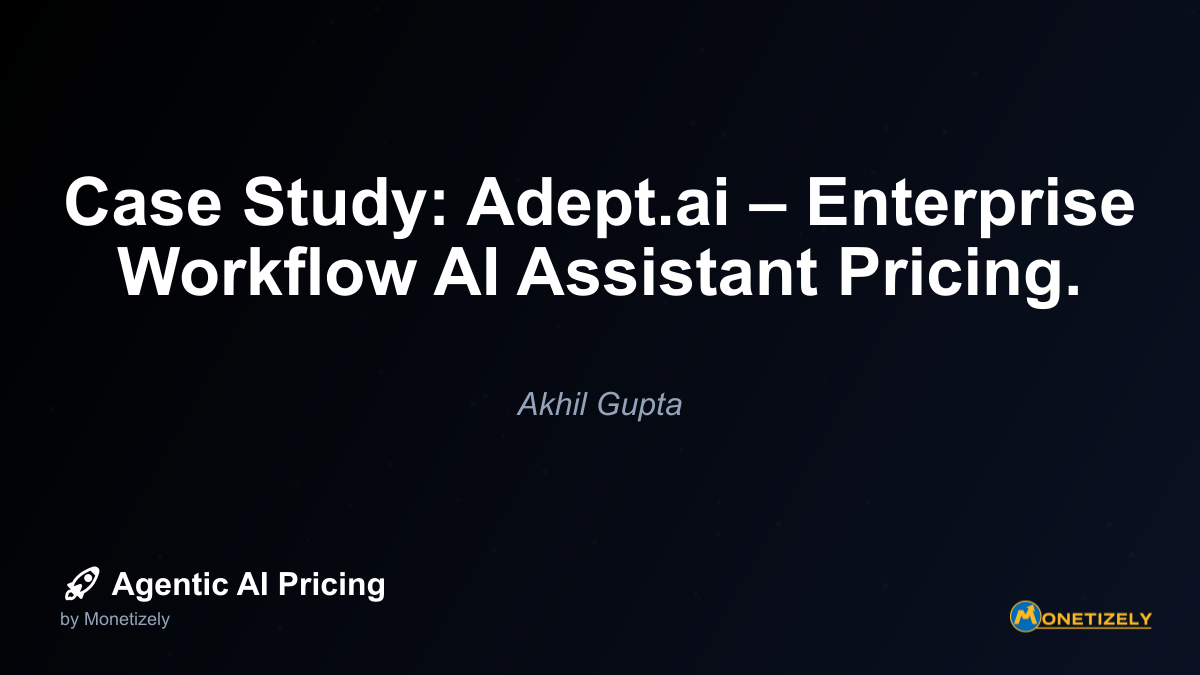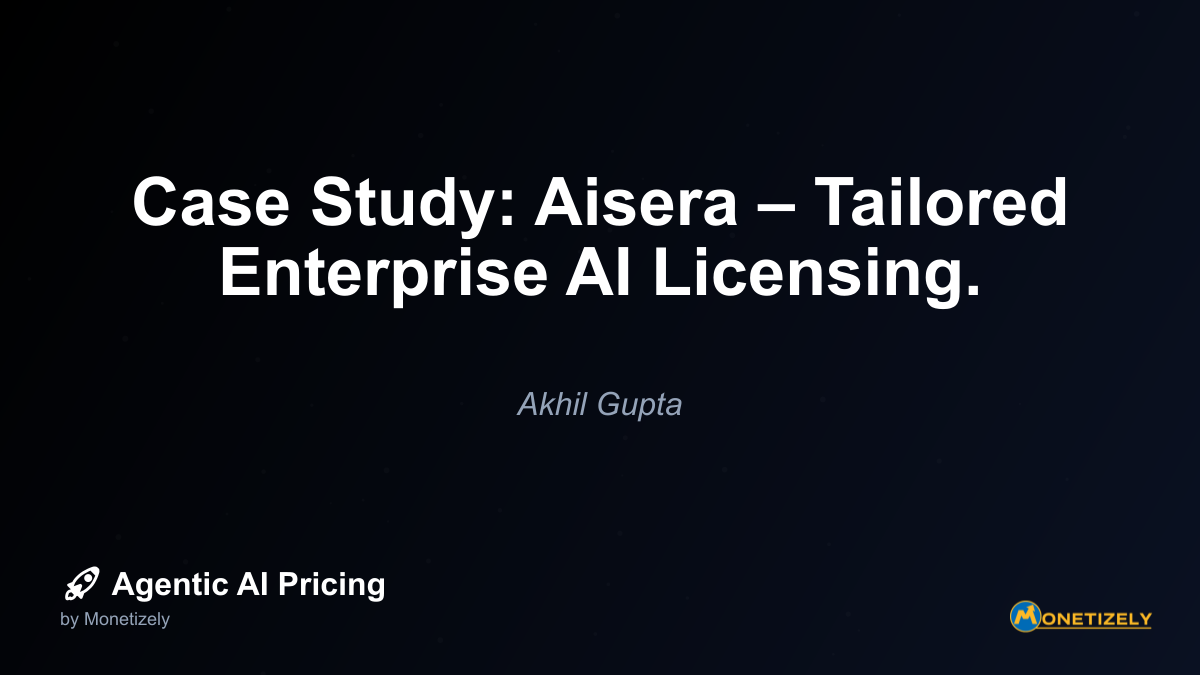· Ajit Ghuman · Case Studies · 6 min read
Case Study: AWS Bedrock’s Pay-Per-Use AI Platform Pricing.
AI and SaaS Pricing Masterclass
Learn the art of strategic pricing directly from industry experts. Our comprehensive course provides frameworks and methodologies for optimizing your pricing strategy in the evolving AI landscape. Earn a professional certification that can be imported directly to your LinkedIn profile.

Comparing AWS Bedrock with Other Cloud AI Pricing Models
AWS Bedrock’s pricing approach exists within a competitive landscape of cloud AI services, each with distinct monetization strategies. Understanding these differences provides valuable context for organizations evaluating their AI deployment options.
Microsoft Azure OpenAI Service
Microsoft’s Azure OpenAI Service offers a similar consumption-based pricing model but with some key differences:
- Token-based billing: Like Bedrock, Azure charges per token processed
- Deployment charges: Unlike Bedrock, Azure adds a separate hourly fee for model deployment regardless of usage
- Regional availability: Azure pricing varies by region, whereas Bedrock maintains consistent pricing within regions
This deployment fee represents a hybrid approach—combining elements of consumption pricing with a minimal fixed cost component. For organizations with inconsistent usage patterns, this can make Azure slightly less economical for experimental workloads compared to Bedrock’s pure consumption model.
Google Vertex AI
Google’s Vertex AI platform takes yet another approach:
- On-demand pricing: Similar token-based consumption model
- Committed use discounts: 1-year or 3-year commitments for discounted rates
- Regional training pricing: Variable compute costs based on region
Vertex AI’s committed use discounts represent a more traditional cloud resource approach, offering predictability at the cost of reduced flexibility. This contrasts with Bedrock’s Provisioned Throughput, which maintains a monthly commitment structure rather than annual locks.
For a more detailed comparison of AWS AI services pricing, you can explore our comprehensive analysis at How Much Does Amazon’s AI Agent Pricing Cost in AWS Services?
Best Practices for Managing AWS Bedrock Costs
Organizations implementing AWS Bedrock can optimize their expenditure through several proven strategies:
1. Implement Tiered Model Selection
Create a framework for selecting appropriate models based on task requirements:
- Use economical models like Claude 3 Haiku for simple tasks and initial drafts
- Reserve premium models like Claude 3 Opus for complex reasoning or specialized applications
- Develop clear guidelines for when to escalate to more expensive models
This tiered approach can reduce costs by 30-50% compared to using premium models universally.
2. Optimize Prompt Engineering
Invest in prompt optimization techniques:
- Minimize input token usage through concise instruction design
- Use system prompts effectively to reduce the need for repetitive context
- Implement prompt templates that balance clarity with token efficiency
- Test and iterate on prompts to reduce token consumption while maintaining quality
3. Implement Caching Strategies
Develop intelligent caching for common queries:
- Cache responses for frequently asked questions or standard processes
- Implement similarity-based caching for questions with minor variations
- Use vector embeddings to identify semantic similarities that can leverage cached responses
Effective caching can reduce token consumption by 40-60% in applications with repetitive query patterns.
4. Utilize AWS Cost Management Tools
Leverage AWS’s native cost monitoring capabilities:
- Set up detailed CloudWatch metrics for Bedrock consumption
- Implement budget alerts and thresholds to prevent unexpected costs
- Use AWS Cost Explorer to analyze usage patterns and identify optimization opportunities
- Consider AWS Budgets for proactive notification of approaching thresholds
5. Develop a Provisioned Throughput Strategy
Create a framework for transitioning from on-demand to Provisioned Throughput:
- Collect at least 30 days of usage data before considering Provisioned Throughput
- Calculate peak-to-average ratios to determine if provisioning makes economic sense
- Start with minimal provisioned capacity and supplement with on-demand during peaks
- Regularly review and adjust provisioned capacity based on evolving usage patterns
Organizations that implement these practices typically achieve 25-40% cost optimization compared to unmanaged Bedrock implementations.
The Future of AI Consumption Pricing: Beyond Bedrock
AWS Bedrock’s consumption model represents an important milestone in AI service pricing, but the landscape continues to evolve. Several emerging trends suggest how AI pricing may develop in the coming years:
1. More Granular Usage Metrics
Future pricing models will likely move beyond simple token counting to incorporate more sophisticated usage metrics:
- Computational intensity: Differentiating between simple text generation and complex reasoning
- Response quality measures: Pricing tied to accuracy, relevance, or other quality metrics
- Value-based components: Charging based on business outcomes rather than raw computation
2. Hybrid Pricing Models
The industry is moving toward more sophisticated hybrid models that combine:
- Base subscription tiers for predictable workloads
- Consumption components for variable usage
- Outcome-based elements for high-value applications
This evolution will provide more options for organizations to align costs with their specific AI implementation patterns.
3. Specialized Industry Pricing
As AI services mature, we’re likely to see more industry-specific pricing structures:
- Healthcare-focused models with compliance and security premiums
- Financial services packages with audit and explainability components
- Creative industry offerings with copyright and attribution features
These specialized approaches will better reflect the diverse requirements and value propositions across sectors.
4. Open Source Alternatives
The growth of open source foundation models continues to influence commercial pricing strategies:
- Commercial providers increasingly compete with self-hosted open alternatives
- Value-added services become key differentiators beyond the base models
- Hybrid approaches combining open models with proprietary fine-tuning emerge
This competitive pressure will likely drive innovation in pricing structures as providers seek to demonstrate value beyond raw model access.
Conclusion: The Strategic Implications of AWS Bedrock’s Pricing Model
AWS Bedrock’s consumption-based pricing approach represents more than just a billing mechanism—it embodies a philosophy about how AI capabilities should be delivered and monetized. This approach has several important implications for the broader AI landscape:
First, it democratizes access to advanced AI capabilities. By removing upfront costs and minimum commitments, Bedrock enables organizations of all sizes to experiment with and implement AI solutions. This accessibility accelerates innovation and adoption across industries.
Second, it creates natural incentives for efficiency in AI system design. The direct relationship between token usage and cost encourages thoughtful implementation, prompt optimization, and appropriate model selection—all practices that benefit both providers and consumers of AI services.
Third, it establishes a clear evolutionary path from experimentation to production. The progression from pure consumption pricing to Provisioned Throughput provides a natural growth model that accommodates changing organizational needs without requiring platform changes.
For organizations implementing or considering AI solutions, Bedrock’s pricing model offers valuable lessons regardless of the specific platform selected:
- Start with consumption-based approaches during experimental phases
- Collect detailed usage data to inform future optimization
- Develop clear guidelines for model selection based on task requirements
- Invest in prompt engineering and optimization as a cost-control strategy
- Consider provisioned capacity only when usage patterns become predictable
By following these principles, organizations can maximize the value of their AI investments while maintaining cost control and flexibility.
The consumption-based model pioneered by services like AWS Bedrock represents a significant step in the evolution of AI pricing—one that aligns costs with value creation while enabling broad access to transformative capabilities. As the AI landscape continues to evolve, this approach will likely remain influential even as more sophisticated pricing models emerge.
For organizations navigating the complex landscape of AI pricing, understanding these models is essential not just for cost management, but for developing effective AI implementation strategies that deliver sustainable business value.
For a deeper understanding of usage-based pricing approaches for AI systems, you may want to read our comprehensive guide Subscription vs. Usage-Based AI Pricing: Which Model Is Right for Your Business?
Co-Founder & CEO
Ajit is the author of Price To Scale, a top book on SaaS Pricing and is the Founder of Monetizely. Ajit has led and worked in pricing and product marketing at firms like Twilio, Narvar and Medallia. His work has been featured in Forbes and VentureBeat. Ajit regularly consults with software companies from Seed stage to post-IPO on pricing strategy. Ajit is also a highly-rated co-instructor for 'The Art of SaaS Pricing and Monetization' on Maven.
Pricing Strategy Audit
Let our experts analyze your current pricing strategy and identify opportunities for improvement. Our data-driven assessment will help you unlock untapped revenue potential and optimize your AI pricing approach.




